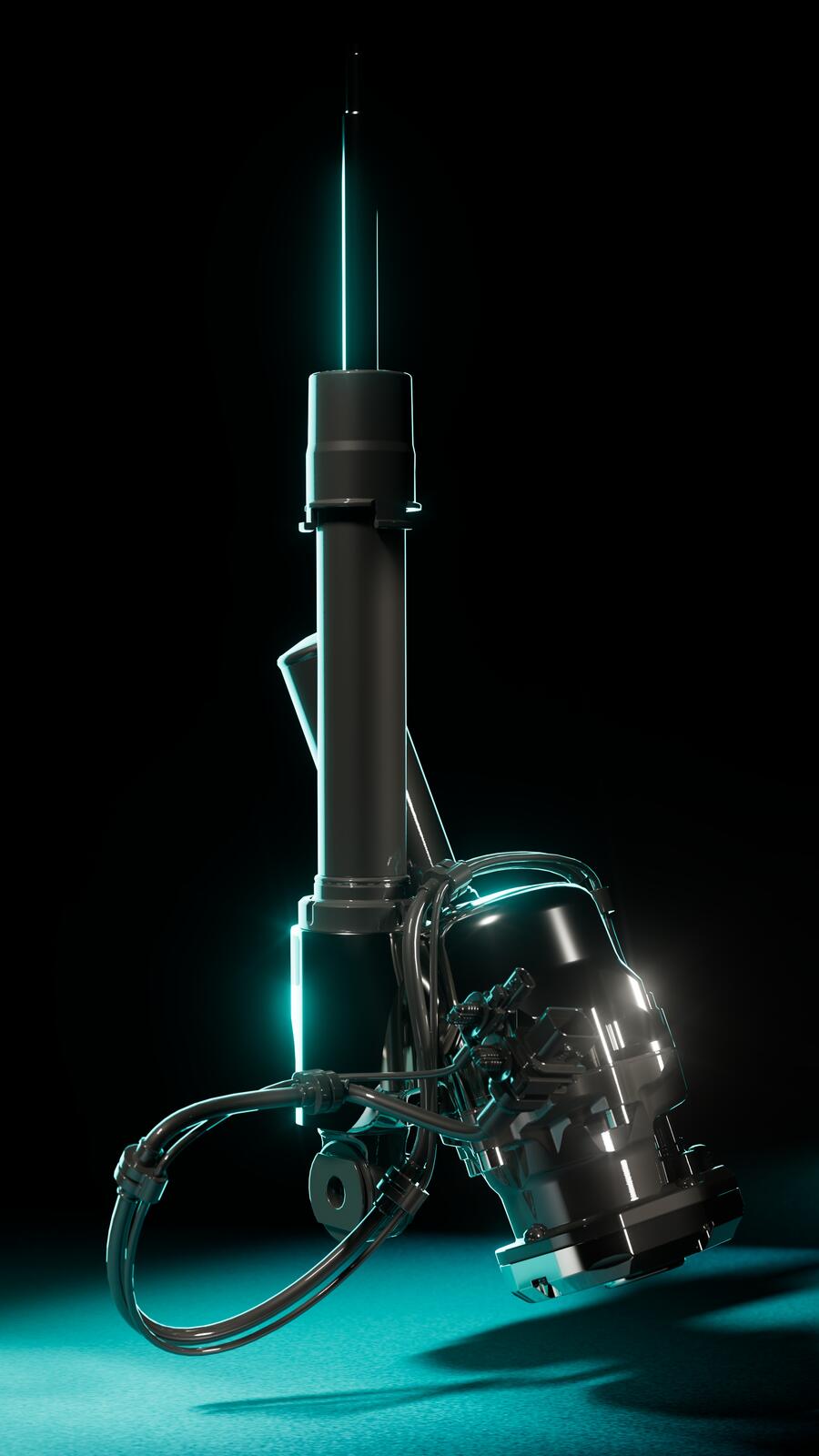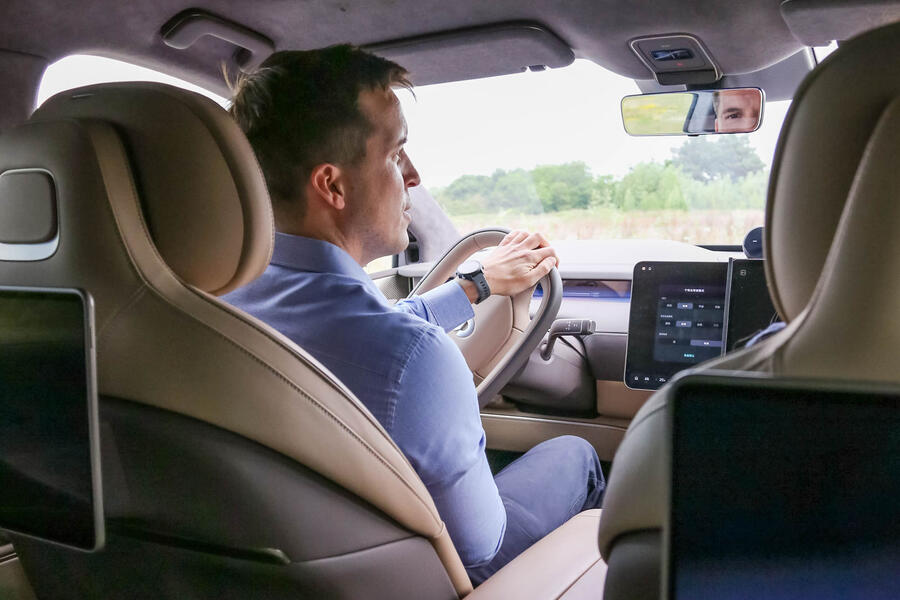US-based start-up Clearmotion has developed a fully active suspension system that could be fitted to almost any car – and it is set to appear in future Porsches.
Fully active suspension – where the car can control both the extension and compression strokes using an actuator or motor – has been the stuff of dreams for chassis engineers for a long time.
Whereas passive or semi-active suspension (adaptive dampers and/or air suspension) can only ever react to inputs from the road, an active system can effectively pull the wheel up for a bump and push it back down when the road dips, as well as compensate for body pitch and roll in order to keep the car’s body perfectly level. In this way, it can theoretically isolate occupants from what is going on underneath. It can also control the load on the four contact patches individually to improve roadholding without compromising the ride.
In a lineage that includes Citroën’s hydropneumatic suspension, Mercedes’ Active Body Control and the Ferrari Purosangue’s Multimatic set-up, active systems have always had compromises, such as cost, reliability, functionality or all of the above.
Porsche’s Active Ride is arguably the best seriesproduction system so far, but it is very expensive and power-hungry, which means it can only be fitted to cars with a high-voltage electrical system (plug-in hybrids and EVs).
Clearmotion’s solution, as demonstrated on Chinese EV maker Nio’s ET9 flagship, looks remarkably similar to a normal combination of a spring (either air or coil, depending on the application) with a remote-reservoir damper. This compactness and relative simplicity allows it to be installed in many existing cars with minimal modification. It runs on 48V, but a converter allows 12V cars to use it too.
Clearmotion technical fellow Marco Giovanardi said: “We are a different kind of supplier from the ZFs of this world. We didn’t already have a mature product, so we couldn’t wait for someone to design a vehicle for us.”
Key to the system is a rotary electric motor with its own control unit, which powers a hydraulic pump that forces fluid in or out of the damper. There’s one for each corner of the car, rather than a central one, thus eliminating metres of pipework.

This all plugs into a central control unit, which uses data from the car’s various sensors to decide what each suspension corner unit should do. Clearmotion doesn’t use cameras because they are unreliable in less than perfect conditions, and lidar sensors are expensive and create too much data.
To add in a predictive element, Clearmotion is also developing Roadmotion, which builds up a detailed scan of road surfaces in the cloud by taking in the data from any number of cars. (Anything from the past 10 years with adaptive suspension will do.) This data can then be fed back to cars with active suspension to allow them to anticipate the road surface.
“That data portion of the business has a way bigger potential,” said CEO Christian Steinmann. For example, that data could allow autonomous vehicles to avoid potholes and other hazards.
As well as being fitted as standard on the Nio ET9, Clearmotion’s suspension will be used on future Porsches. Other OEMs are showing interest too.
With greater scale should come lower costs, said Steinmann: “So far, every application of active suspension has been in ultra-luxury vehicles or race cars. My objective is to get it into mid-size vehicles. We hope to accomplish this within this decade – in China probably by 2027.”
Is it as good as Porsche's Active Ride?

Autocar was invited to Clearmotion’s UK tech centre at the Horiba MIRA test track to experience its Nio ET9 demonstrator. In terms of hardware, it was exactly as you can buy it in China, although Clearmotion has tweaked the software to make it more to its own liking – and more suitable for UK roads.
The difficulty with such a system is that it is, by design, underwhelming. The aim is that you can’t feel the bumps. It’s only when I experience the same road in another car, or with the system turned off, that I realise that this B-road isn’t glass-smooth.
Turning the system on is quite spooky: every bit of pitch or head toss just vanishes. Adding on the Roadmotion somehow makes it even smoother. This is a more incremental change than the difference compared with normal air suspension, but it is easy to feel nonetheless.
Is it as good as Porsche’s system? Without a backto-back test, it’s hard to say. Equally, it’s clearly in the same ballpark, and in a different league from lesser systems.
That said, it’s not perfect. The active suspension is spectacular at erasing the big bumps but it can’t quite filter out the smaller ripples and asperities in the surface. On the one hand, this is perception: because the primary ride is so smooth, the secondary aspects are drawn into focus. On the other hand, the system doesn’t have the bandwidth to filter out such high-frequency inputs yet. The bushes could be made softer, but that would introduce latency as the actuators have to push through their deflection before getting to the job at hand.







Join the debate
Add your comment
I used to go over speed bumps - without slowing down - in a 2cv, and you couldn't feel them. Modifying one of those using parts from a Xantia Activa, I'd wager you could come up with something that'll match what they're doing. Describing how good it is that they've removed so much pipe work, and hoping you've forgotten the 4 electric motors, while talkign about reliability.
Headline: "UK firm reveals..."
First sentence: "US-based start-up....."
C'mon guys, this is a bit ridiculous. The only UK connection I can see from the article is that they have a tech centre in the UK. Misleading headline.
Illya - don't forget the Jaguar I Pace with air suspension and 'adaptive dynamics' (= adaptive dampers) for comparison. From as long ago as 2018! I Pace forums on Facebook and Pistonheads speak very favourably of the I Pace so equipped.
I agree comment about big wheels/small sidewalls as way of worsening the ride of almost any vehicle. Many reviews say the bigger wheels of the more expensive models in a range are actually a negative.